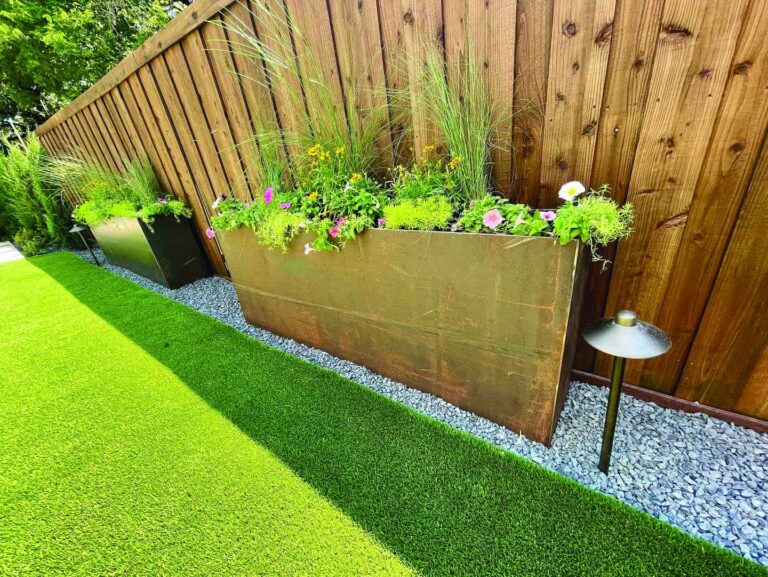Fall is In the Air
Cooler temperatures, rain in the forecast, and football on TV — IT’S FALL IN TEXAS. Our family always looks forward to fall. Getting out on the patio to eat some dinner or kicking your shoes off in front of the fireplace to watch the game is hard to beat after such a long, hot summer! As our seasons transition, here’s a few things to keep your eye on.
In regards to your turf areas, rain will probably promote a lot of fast growth (both grass and weeds) so weekly cutting is a must. If at all possible, only cut when dry. This will lend to a cleaner, more precise cut and a healthier overall lawn. Even when bagging the clippings, thicker lawns tend to leave behind some thatch. Don’t let it sit there. Grab a rake to get it up. Over time, the thatch will settle and deter needed oxygen and nutrients from getting down into the ground and to the root system that depends on it. (If you have a very thin lawn it might be a good idea to dethatch or aerate this season.
During the rainy season, it’s common to notice standing or pooling water in low areas of your property. Sometimes you can get a sand-based soil blend to fill these areas up a couple inches at a time to eliminate them. But sometimes these areas require addressing with a drainage system. If you’re unsure of the best solutions, it is always best to consult a professional — but definitely take action to help eliminate potential problems moving forward such as mold, fungus, mosquito breeding, etc.
We see it every day, but don’t be the guy watering in the rain. Even if you have a rain/freeze sensor, make sure you’re paying attention to the forecast and adjusting per weather conditions when possible. The ground can only absorb so much moisture, so be responsible with your irrigation system to ensure you are keeping runoff to a minimum. It’s Texas, and water conservation is a huge issue going into the fall rainy season. It is not uncommon to be able to cut your two or three days a week watering down to a one- or two-day rotation depending on rain amounts.
It’s a good idea, at least once a month, to turn the system on TEST Mode and run through the zones to ensure your sprinkler heads are providing adequate coverage and the system as a whole is operating efficiently. A lot of our runoff occurs from broken pipes, drip lines, and heads that we don’t notice because our systems go off early in the morning and aren’t checked on a regular basis.






